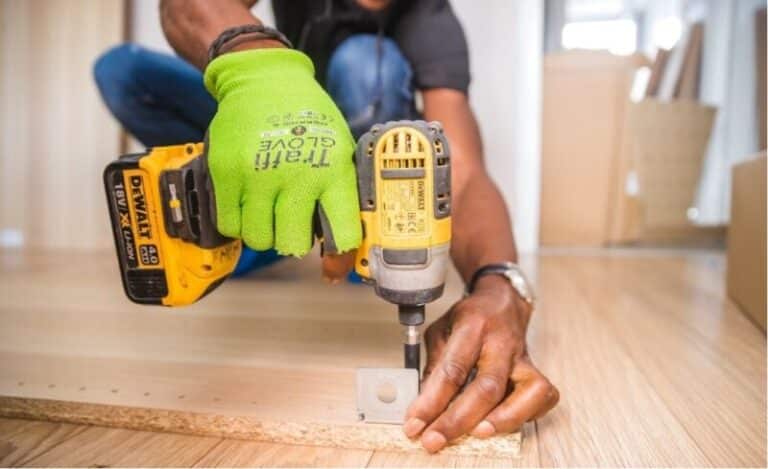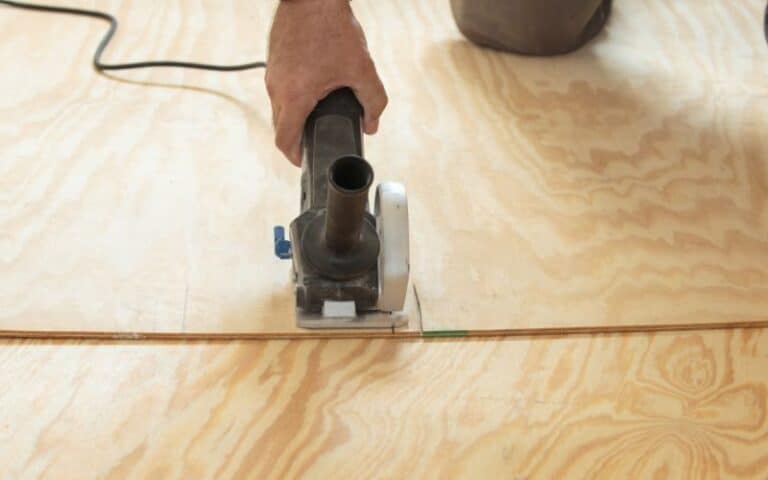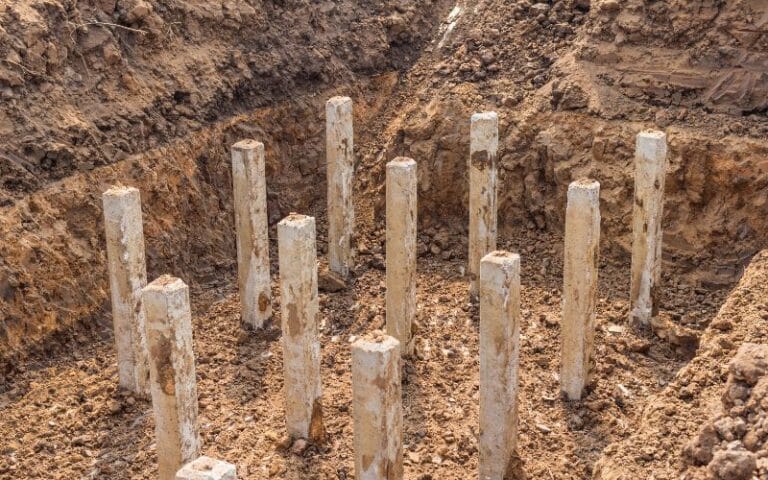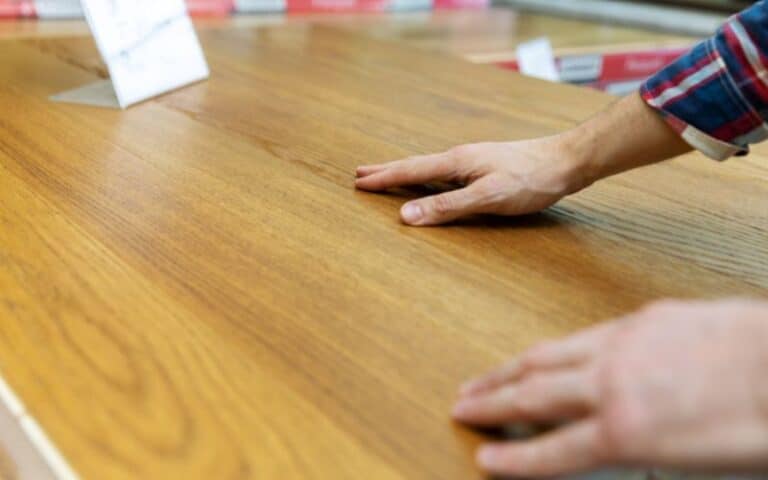Concrete is one of the most important building materials supporting all the structures in our civilization today.
We use concrete for everything from walls and foundations to the floors of our homes.
Although concrete is a very popular building material, concrete floors are porous and can absorb much water, thus weakening it.
One of the ways to reduce the porosity of a concrete floor is by waterproofing it with a waterproof membrane like Redgard.
Redgard is a fast-drying, liquid elastomeric, waterproof, and crack-prevention membrane that protects concrete floors and surfaces. You can install the film by cleaning the concrete, priming it, applying the Redgard membrane, and allowing it to dry. A properly primed and done concrete surface will not crack and become effectively waterproof.
In this article, I will explain the various uses of the Redgard membrane, the tools needed for installation, and the steps to prime and install it on your concrete floor.
Ready for a Flooring Quiz?
Will Redgard Work on a Concrete Floor?
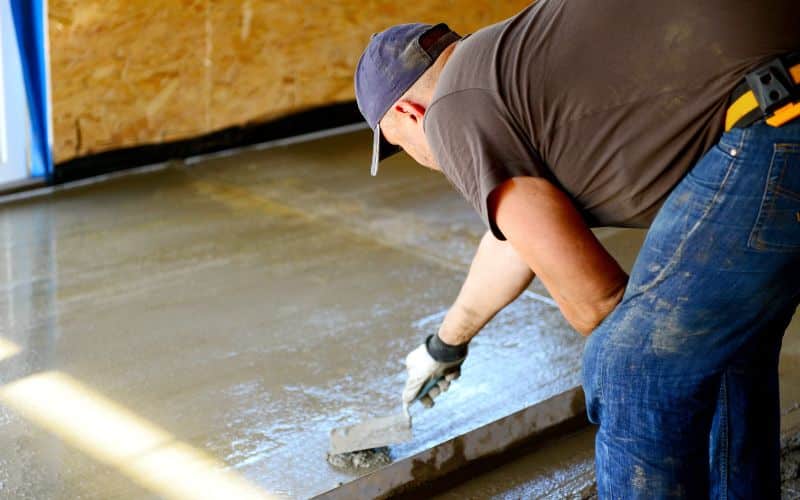
Redgard will work on concrete floors and can easily waterproof the surfaces of other materials.
The solution creates a film that seals cracks and forms a waterproof layer that prevents water from flowing into the concrete through the surface.
Here are some of the prevention and protection properties Redgard membrane provides for concrete floors.
#1. Concrete Waterproofing
Redgard membrane primarily waterproofs the floor of any concrete surface, which is perfect for concrete floors suffering from high water porosity.
#2. Concrete Crack Prevention
Redgard membrane fills up the cracks in concrete surfaces and prevents them from expanding.
It also reduces the shock from thermal expansion and contraction, protecting the concrete and tiles.
Will Redgard stop water from seeping through a Concrete Floor?
Yes, Redgard will stop water from seeping through a concrete floor because it forms a waterproofing membrane.
There are no two concrete floors with equal porosity and water absorption rate, probably due to factors like the thickness and density of the concrete.
The concrete porosity and absorption will affect the ability of the Redgard solution to stop water from seeping into the concrete.
If the Redgard membrane isn’t even, the waterproofing might fail, and it will allow water to seep into the concrete.
Here are some precautions to take when applying Redgard on concrete floors.
- Clean the surface of the concrete thoroughly to remove dirt and oil contaminants.
- Allow the concrete floor to dry before applying.
- Open all the windows in the room when the Redgard membrane is drying.
- Do not install tiling on the membrane until it dries properly.
How to apply Redgard over Concrete Floor?
You can apply the Redgard membrane over your concrete floor by obtaining the necessary materials, cleaning the concrete, applying the membrane, and allowing it to dry.
Enhancing the moisture resistance of your concrete floor is important for maintaining its lifespan. Redgard, a waterproofing membrane, can protect concrete surfaces.
If you plan to install tiles or want to protect your concrete floor, you must satisfy a few requirements before installing Redgard.
From surface preparation to membrane drying, understanding the process of applying Redgard can help you achieve a proper result.
Here are five steps you need to do to apply Redgard on your concrete floor.
#1. Purchase Required Tools
Just like a mechanic is nothing without their tools, you won’t be able to apply Redgard on your concrete without the correct tools.
Here are the tools you need for the job.
- Regard membrane
- Rollers
- Paintbrush
- Mop
- Trowel
- Broom
- Concrete cleaner
- Scrubbing brush
The paint rollers, trowel, and paintbrush are the primary tools to apply the Redgard membrane.
While the mop, scrubbing brush, and concrete cleaner are cleaning agents used to prime the concrete surface.
A one-gallon bucket of Redgard is enough to cover 70 square feet, so it should be enough for a small room.
#2. Clean the Surface
You need to clean the surface of the concrete before you can apply the Redgard membrane.
Contaminants like oil, mold, and algae on the surface of the concrete will prevent it from adhering properly.
You should close the windows in the room and sweep the concrete floor multiple times until no more dirt is left.
After sweeping, you can mop and scrub the floor with a concrete cleaner. After cleaning, you need to allow the floor to dry properly.
#3. Fill Cracks and Uneven Surfaces
Many concrete surfaces develop cracks immediately after curing or with time as the building ages.
If you apply Redgard on a concrete surface, you should do well to fill up cracks and depressions.
Applying the membrane over a non-primed crack can cause new cracks in the film layer.
You can fill the cracks with concrete sealant or a slightly diluted Redgard.
To do so, apply the mixture to all the visible cracks in the concrete and allow it to dry. Always prime Cracks and finish them carefully.
#4. Apply the Redgard Membrane
After filling the cracks on the surface of the concrete, you can apply the membrane with the rollers and trowel.
Dip the roller into the bucket and gently apply the membrane from one end of the room to the other.
You must ensure the membrane is spread evenly at all sides of the floor, starting from the end of the room.
If you apply the Redgard on the sides of the concrete, you need to reinforce it.
Concrete near doors and heavy machines will benefit immensely from reinforced Redgard membranes.
Fiberglass mesh tape is a very good reinforcer you can use to support your Redgard membrane.
#5. Allow to Dry
You have to allow the Redgard membrane to dry before you can perform any other operation on it.
Redgard is pinkish when it is wet and dark red when properly dried. It takes about 2 hours for Redgard on concrete to dry.
If the room is extra humid with poor ventilation, it can take up to 48 hours for the membrane to dry.
Can you Waterproof Concrete with Redgard?
Yes, you can waterproof a concrete surface with Redgard by applying a membrane layer on it and allowing it to dry.
Concrete structures like bathrooms, pools, and basements need to be waterproof because they constantly get exposed to water.
Sadly, even waterproofing concrete surfaces has its drawbacks and benefits.
Here is a table identifying the pros and cons of waterproofing concrete with Redgard.
| Pros | Cons |
|---|---|
| Regard Waterproofs and provides flood protection | Expensive to apply on large areas |
| It seals and protects existing concrete cracks | Prone to flexing and cracking if there are temperature fluctuations |
| Small surfaces don’t require much skill to waterproof | Application inconsistency can lead to uneven surfaces |
| Reduces water porosity that can weaken concrete floors | Concrete floors with waterproofing membranes have poor breathability, which can be problematic. |
Can you Tile directly over Redgard on the Concrete Floor?
Yes, you can tile over Redgard on a concrete floor. Redgard is very popular among tilers because it is a controlled barrier between the concrete and the tiles.
Concrete floors have varying porosity, affecting the type of sealant you can use.
The two types of concrete sealants are membrane and penetrating sealants.
Redgard belongs to the family of membrane sealants because it forms a film after it sets.
The membrane Redgard forms is particularly important because it is elastic and waterproof, making it a good material for tiling.
Here are two reasons you can and should tile directly over Redgard on your concrete floor.
#1. Protects the Tiles from Temperature Fluctuations
Unlike concrete, Redgard is elastic and doesn’t crack due to small temperature changes. The elasticity acts as a buffer between the concrete and the tiles.
You might not know, but concrete expands when heated and contracts while cooling.
Sadly, concrete is a poor conductor and non-homogeneous, so it heats/cools unevenly and cracks.
The presence of Redgard in between the tiles and concrete reduces the stress on the tiles from the concrete expansion, effectively protecting them.
#2. Acts as a Shock Absorber
Tiles are ceramic, which is hard but brittle. Their crystal lattice can shatter if subjected to shock, so tiles are prone to cracking.
As we all know, the more rigid an object is, the easier it breaks. Since tiles cannot flex, sudden shock can break it.
So, if you apply Redgard on your concrete floor and tile on the surface, it will greatly mitigate the shock effect on the tiles.
The Redgard membrane will compress and absorb the shock placed on it.


